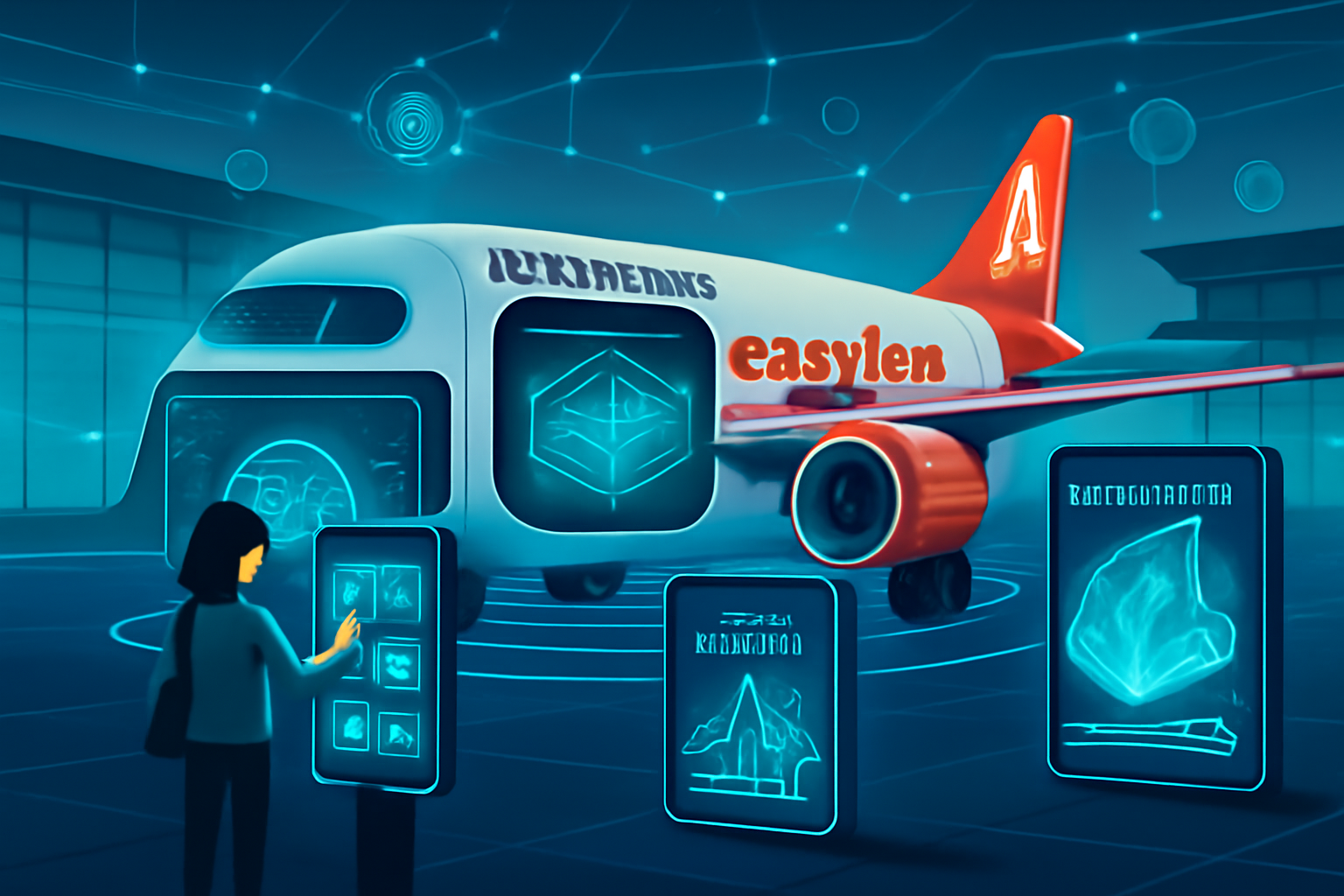It’s 5:30AM at EasyJet’s Operations Control Centre at Luton Airport. While the sun rises quietly outside and Europe’s cities begin to stir, a hive of activity is already in full swing inside a room lit by glowing glass displays, real-time dashboards, and air traffic simulators. In this space, known informally as Mission Control, EasyJet’s Disruption Response Team (DRT) monitors, plans, reroutes, and reacts to changes minute by minute. It’s a complex ballet of aviation logic, customer commitment, and real-time decision-making. Paired with the airline’s powerful AI platform, Jetstream, this team acts as EasyJet’s central nervous system, ensuring your travel plans stay in motion—come rain, snow, technical trouble, or industrial action. This is the story of how EasyJet turns disruption into delivery.

The Anatomy of a Disruption
Common Causes of Disruption
Disruptions come in many forms—some predictable, others not. Each presents a unique operational challenge that can ripple across EasyJet’s vast network.
- Weather: Thunderstorms, high winds, fog, snow—particularly at European hubs like Amsterdam, Milan, or Geneva.
- Airspace Restrictions: Military exercises, air traffic control strikes, or geopolitical closures.
- Technical Malfunctions: Routine mechanical issues or unexpected system alerts mid-flight.
- Crew Logistics: Delayed crew rotations, legal duty hour limits, or misalignment across multiple flight legs.
- External Shocks: Security incidents, airport power outages, or global events like the COVID-19 pandemic.

The Domino Effect
“A single delay can potentially affect 18 flights by 3PM,” notes one Flight Network Manager. That’s because EasyJet runs tightly interlinked networks—flights, crews, and aircraft are connected like a lattice. One broken link impacts the rest. The job of the DRT is to break the chain reaction before it escalates.
Step-by-Step: Responding to a Challenge
Let’s break down exactly how the Disruption Response Team responds when a disruption occurs—from detection to resolution.
Step 1: Early Warning Systems
Every aircraft in EasyJet’s fleet is outfitted with hundreds of digital sensors. Aircraft GPS, engine diagnostics, and weather satellite data feed into Jetstream, the AI brain that begins each day proactively scanning for threats.
- Jetstream Predictive Alerts: The system analyses patterns across the aviation ecosystem—humidity data over Zurich, wind trends in Barcelona—and generates predictive risk maps. This flags potential disruptions hours, sometimes days, before they hit the radar.
Example: AI detects a likely weather-induced airport closure in Milan based on changing radar and runway surface data. Alerts go out to DRT leaders before the airport even issues a warning.
Step 2: Rapid Response Activation
Once a threat is confirmed, the DRT swings into action in minutes.
- The Command Centre Lights Up: An entire bank of displays shows everything from aircraft status to crew availability, weather overlays to passenger seating maps.
- Human-AI Collaboration: Jetstream proposes three or four ranked contingency scenarios. For example, if an inbound plane to Paris is delayed, should we:
- Delay the flight and hold the crew?
- Switch equipment and reroute another aircraft?
- Reposition a standby aircraft and notify passengers in real-time?
These decisions are triaged by humans with deep domain knowledge. Balancing passenger experience, crew legality, cost, regulatory rules, and airport operations turns a five-minute delay into a five-dimensional challenge.
Step 3: Multi-Channel Passenger Communication
Your screen flashes: “Your flight is delayed by 20 minutes. A new departure gate has been assigned.” It may seem simple, but coordinating that message for a packed Airbus A320 flying into London—across multiple languages, systems, and airports—is a feat of precision logistics driven by bots and machine learning.
- Automated Rebooking Tools: If a flight is cancelled, AI systems instantly match passengers with alternative flights, issue vouchers, or initiate refund triggers.
- Omnichannel Chatbots: AI-enabled virtual agents help customers rebook, receive updates, file complaints, or ask questions in real time, reducing call centre pressure during peak periods.
- Tone Matching: EasyJet’s AI considers emotional tone—if weather disrupts hundreds of journeys, messages shift to become more empathetic, informative, and clear.
This innovation isn’t just for operational efficiency—it’s customer-centricity at scale.
Behind the Screens: Human Heroes in Action
Despite the impressive software tools, it’s the people behind the platforms who bring the magic to life each day.
“We run hundreds of ‘what if’ simulations every morning,” says Laura, a veteran Flight Dispatcher. “The AI gets us 80% there, but sometimes two options look equally right on paper. That’s when you need judgment—intuition.”
In many cases, regional knowledge plays a role. Teams know “Paris behaves differently at 6PM on Thursdays” or that Geneva’s runway protocols slow down departures in certain wind conditions—nuances AI can learn, but which humans immediately anticipate.

Real Example: Navigating a Summer Storm
Let’s map out a real-life disruption faced by EasyJet.
The Trigger
A sudden supercell thunderstorm threatens Milan-Malpensa just as 28 EasyJet aircraft are en route to or from the region.
Pre-Storm Response
Jetstream projects arrival times, potential diversions, and gate congestion at alternative airports like Venice and Turin. It advises delaying outbound flights from London and pre-deploying maintenance crews to strategic locations.
Mid-Storm Action
- Six flights are diverted.
- Nine are rescheduled for later slots at less congested airports.
- Customers in Milan receive vouchers, hotel credits, and rebooking offers within minutes.
Post-Storm Recovery
As clouds clear, aircraft are repositioned thanks to preemptive Jetstream modeling. Night crews are activated for faster turnaround, and passenger satisfaction remains high—despite the large-scale disruption.
Continuous Improvement: Learning from Every Disruption
Every challenge becomes a learning opportunity.
- Machine Learning Feedback Loops: Every decision, scenario, and outcome is logged into EasyJet’s dataset. AI models retrain and refine predictions based on real-world behavior.
- Performance Dashboards: Real-time and retrospective dashboards monitor disruption impact, team speed of response, customer satisfaction, and operational costs.
- Drill Practices: Teams conduct mock disruption scenarios monthly—testing not only their own reflexes but also the adaptability of AI systems.
This drive for continuous operational resilience makes EasyJet one of Europe’s most agile low-cost carriers.
What Passengers See (And Don’t See)
To the passenger, disruption might appear as a message on their smartphone or a gate change announcement—but here’s what really happens behind the scenes:
Visible:
- Timely delay alerts
- Seamless boarding adjustments
- Automated rebooking links
- Accelerated refund and voucher processing
Invisible:
- 80+ AI algorithms working in parallel
- Teams in contact with 140+ airports
- Apps calculating aircraft refueling needs post-diversion
- Predictive maintenance schedules auto-adjusting based on delays
It’s a symphony of data, decisions, and dedication—delivering a passenger-first travel experience, even when things go sideways.
Looking Ahead: Toward Proactive Operations
EasyJet’s long-term vision is a shift from reactive recovery to proactive prevention. AI is at the heart of this strategy.
Innovations on the Horizon:
- Enhanced Simulation Environments: New platforms will model how minor events ripple through the network over 12, 24, or 48 hours.
- IoT-Driven Predictive Tools: Real-time updates from aircraft sensors, terminal conditions, and baggage handling will trigger proactive scheduling adjustments.
- Multi-Modal Travel Integration: Tomorrow’s AI won’t just reroute you to another EasyJet flight—it might connect you with high-speed rail from Milan to Zurich if that gets you to your destination faster.
This next phase of “disruption anticipation” could transform the industry altogether.

Final Approach: A Tribute to the Quiet Heroes of Air Travel
EasyJet’s Disruption Response Team, powered by technology and driven by people, forms the invisible infrastructure behind your travel experience. While many airlines still respond reactively to crises, EasyJet leads the charge with AI tools that learn, adapt, and improve continuously. Your seamless rebooking, that friendly compensation message, or that sudden gate switch — all are products of a highly-coordinated dance between logic, learning, and logistics. The next time you board an orange-and-white aircraft headed across Europe, know this: there’s a trusted team—half-human, half-machine—working behind the scenes so that no matter what the skies bring, EasyJet keeps flying forward.












No Comments